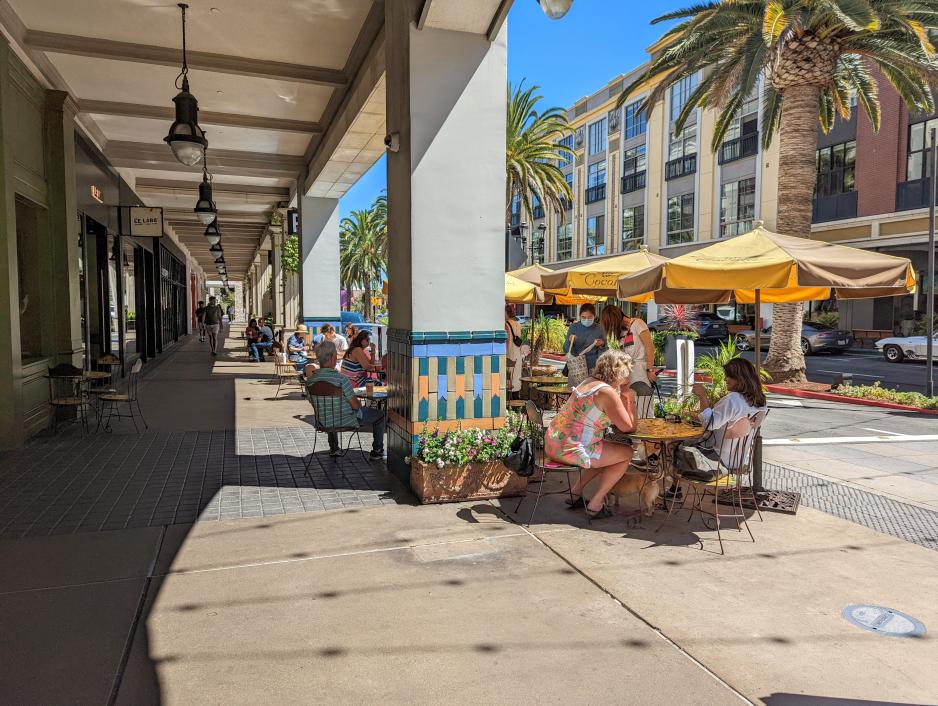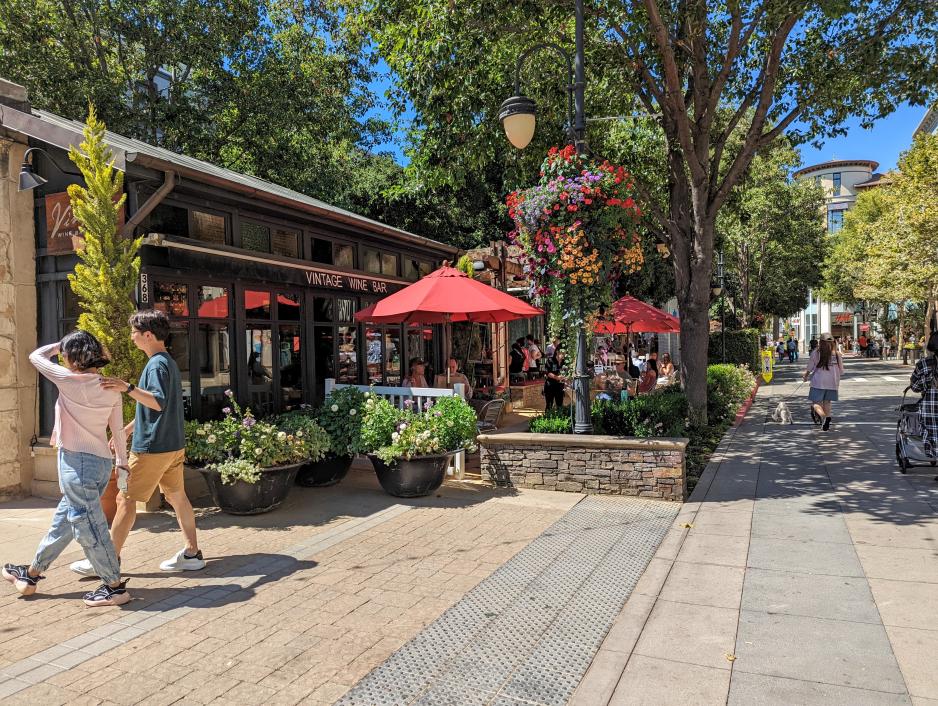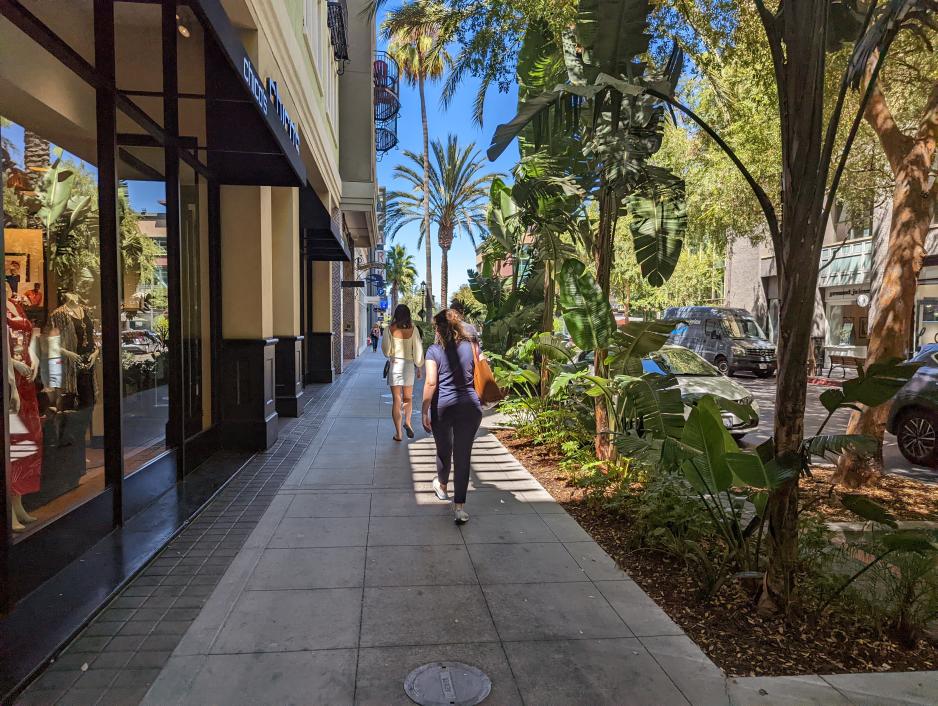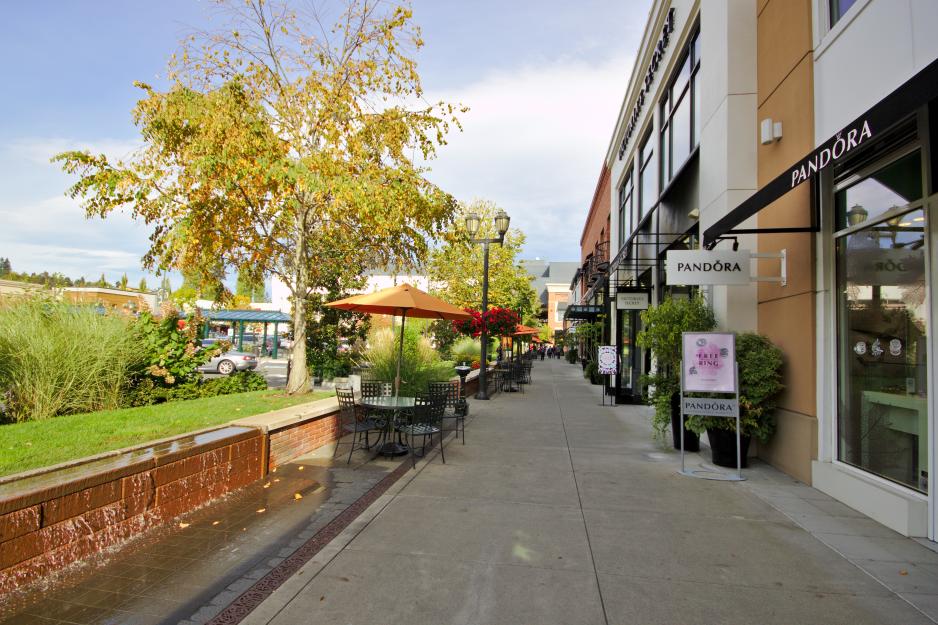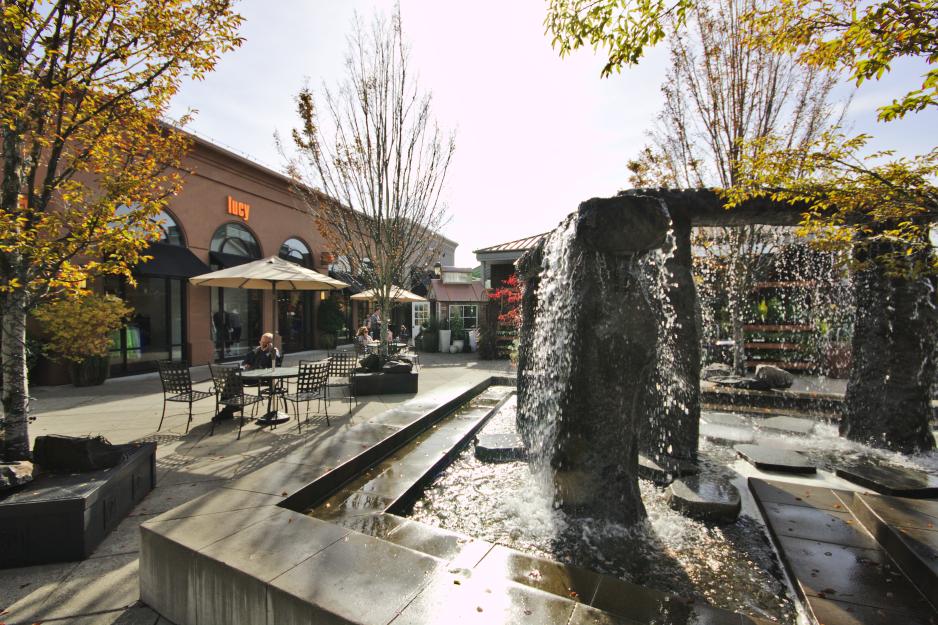San José, CA, USA – Santana Row Development
Santana Row is a residential, shopping, dining, and entertainment district built around a main street in San Jose, California. The 18-acre development includes at least 680,000 square feet of retail space and restaurants, 1,200 dwelling units, two hotels, seven parks, and office spaces. Located across from a regional shopping mall and adjacent to several Frequent VTA bus lines, the development often closes roadways to vehicle access for Farmer’s Markets and other seasonal events. The project was designed to have residential and retail uses coexist within the same building footprint and utilizes pedestrian-scale design. Many restaurants have outdoor seating that enhances pedestrian safety paired with shops that have awnings and plentiful outdoor seating to make the area feel welcoming.
Seattle, WA, USA - University District Urban Design Guidelines
The Seattle Office of Planning and Community Development undertook a four-year strategic partnership between the community, city, and the University of Washington to plan for a vibrant transit-oriented University District neighborhood. The design guidelines were updated to provide design guidance that reflects changes in the neighborhood since 2000 when the design guidelines were originally developed, includes direction recommended by neighborhood stakeholders, and provides guidance in the application of new development standards adopted as part of legislation for the 2017 University District rezoning project. The legislation allows greater height and density in the core of the neighborhood, applies development standards to help new buildings fit into the neighborhood context, implements affordable housing and open space requirements, and creates incentives for childcare, historic preservation, and street improvements.
The design guidelines are used by the Design Review Board along with Citywide Design Guidelines in reviewing proposed projects in the University Community Urban Center to foster design excellence in new multifamily and commercial projects. For more information, visit https://www.seattle.gov/opcd/ongoing-initiatives/u-district-urban-design.
